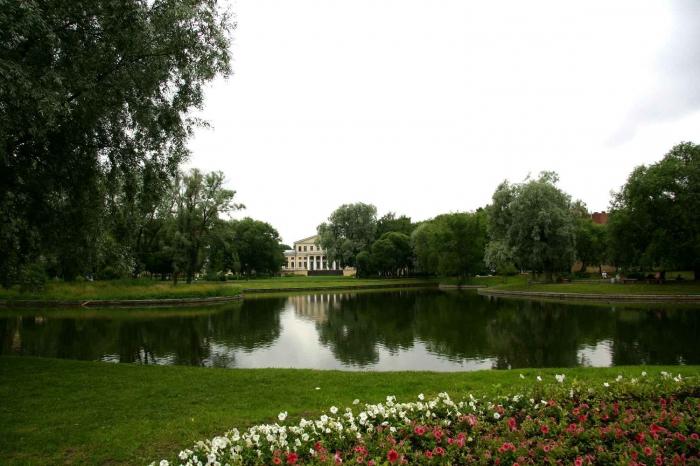At the beginning of the 18th century, the Yusupov Garden was an unremarkable piece of land bounded by the Fontanka River and Sadovaya Street. It was then that he was presented to Prince G.D. Yusupov Peter the Great. Later, under the guidance of the son of the prince - Senator B. G. Yusupov, a beautiful garden with ponds and canals was laid out on this place, and a Baroque-style wooden mansion was built on the banks of the Fontanka River.
Later, in 1789, when B.G.'s son returned from France Yusupov and brought with him a large collection of paintings and sculptures, the question has ripened on the reconstruction of the mansion. To implement the architectural plan, the sculptor D. Quarnegie was invited, who managed to create a palace in the classical style by 1793.
Significant changes have been made to the adjacent garden. A huge pond with four islands, bridges was dug on its territory, and gold fish were launched into its waters. Artificial loose picturesque hills, flowerbeds, marble statues, graceful arbors and greenhouses with rare fruits appeared around the garden. Yusupov Garden opened its gates to everyone who wants to take a walk through its magnificent territory. But soon this idea had to be abandoned due to the frequent cases of hooliganism and theft.
In 1810, the family of Prince Yusupov broke up, and he sold his estate to the city. The garden acquired a new owner - the Institute of the Corps of Railway Engineers, and soon the construction of educational and residential buildings began on its territory. This significantly reduced the area of the garden and disfigured the once magnificent landscapes.
Fifty years later, in 1863, at the behest of Alexander II, part of the garden was again opened to the general public. To do this, we cleared a pond with two islands. Connecting chain bridges were brought to them, a boat station was built and a fountain was launched. Yusupov Garden has become incredibly popular among the townspeople. In summer, a shooting gallery worked here, and in winter a skating rink, slides were built and Christmas celebrations were held with fireworks and pancakes.
In 1878, the country's first figure skater competition took place in the Yusupov Garden, and from that moment on it began to be considered the birthplace of figure skating in Russia. In 1887, the entire garden was handed over to the Society of Ice Skating Lovers, and a year later a figure skating school began to work here. But the garden was still open for citizens during the holidays and festivities. In a short time, they founded the country's first hockey team and organized the holding of Russian figure skating championships.

From 1892 to 1900, the Yusupov Garden underwent the most destructive changes for him. Its north-eastern part was built up with office facilities of the Ministry of Railways, including the Railway Museum. And in the northwestern part is the Imperial Rescue Society on the Waters, which built a large number of buildings on the territory - residential buildings, a warehouse, an office, a museum and a meeting room. All trees were cut down on this site and equipment for water rescue training was installed.
After 1917, the figure skating school continued its work, and in 1924 the first championship of the Soviet Union in figure skating was held here. But the garden was renamed the Children's Park of the Oktyabrsky District of Leningrad. In 1990, it received its former name.
Now the Yusupov Garden of St. Petersburg is incredibly beautiful and well-groomed; at any time of the year it receives citizens and visitors. There are concerts of classical music, a festival of blues music, an ice rink is open in winter and, as before, Christmas celebrations take place.
Travel through St. Petersburg to the Yusupov Garden to the metro stations: Sadovaya, Spasskaya, Sennaya Square. From the metro walk to the street. Sadovaya, 54.